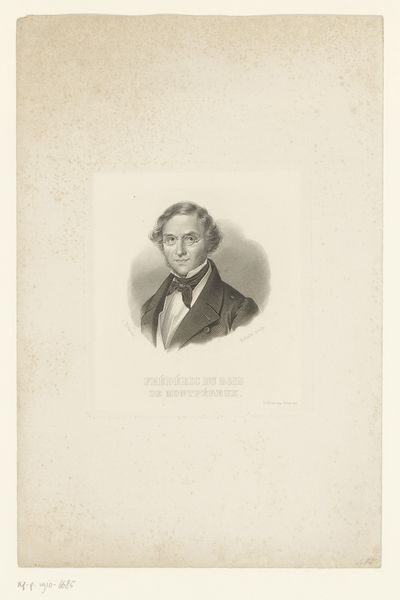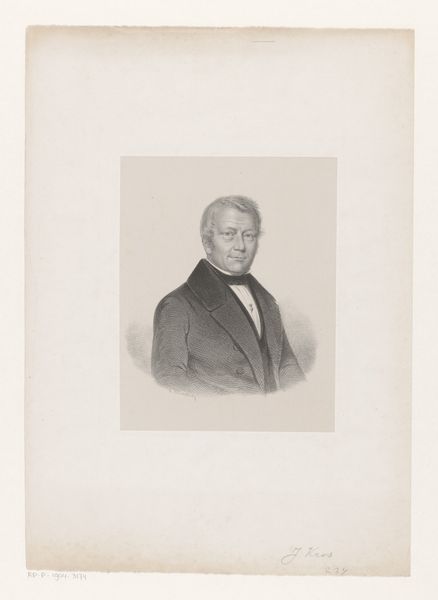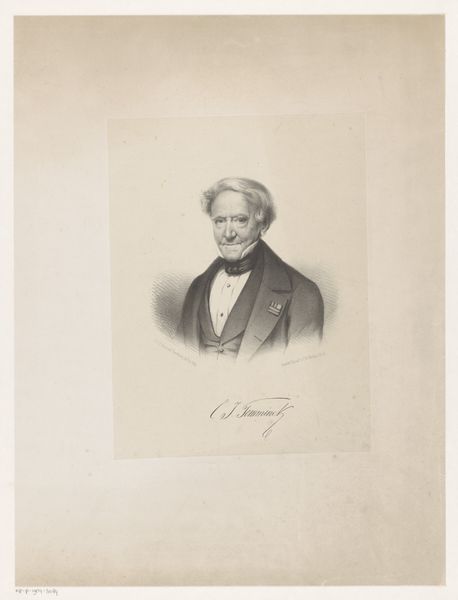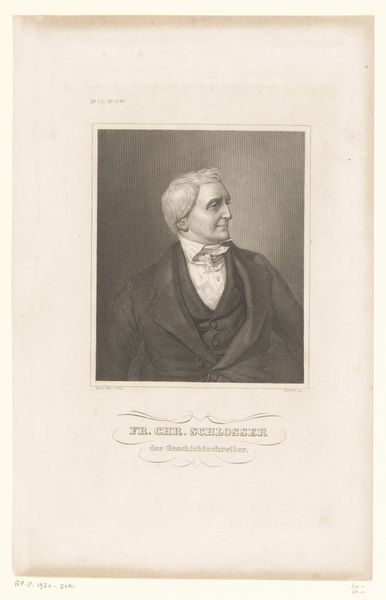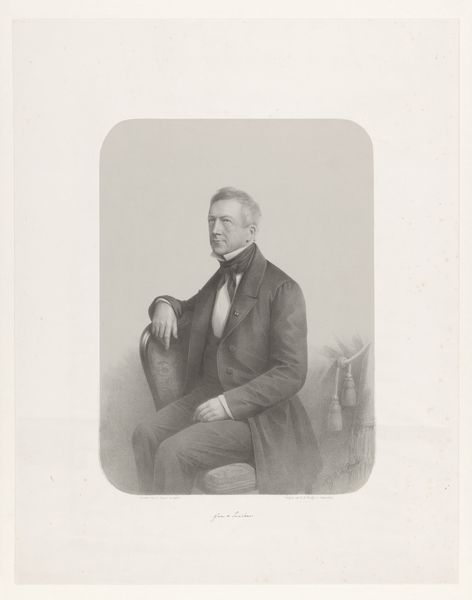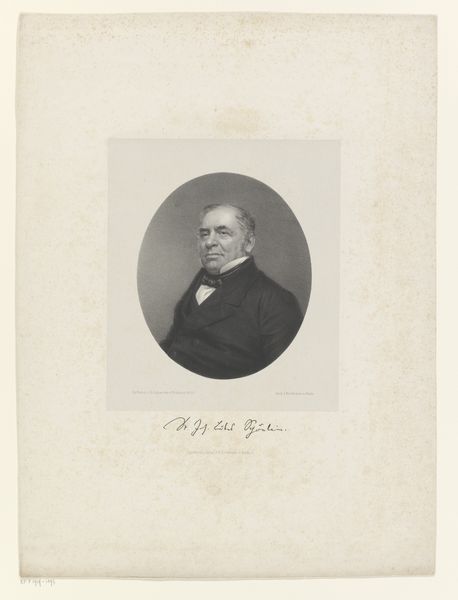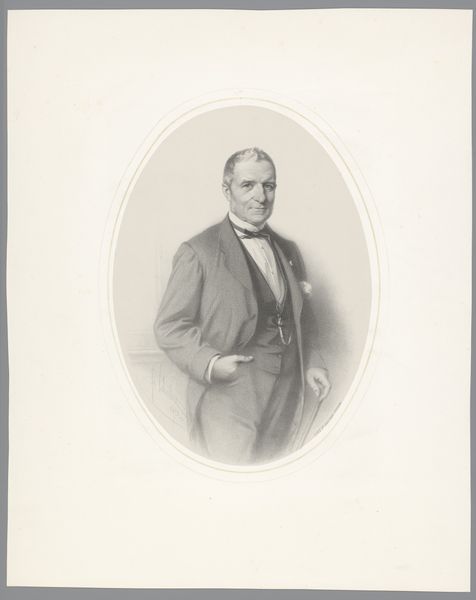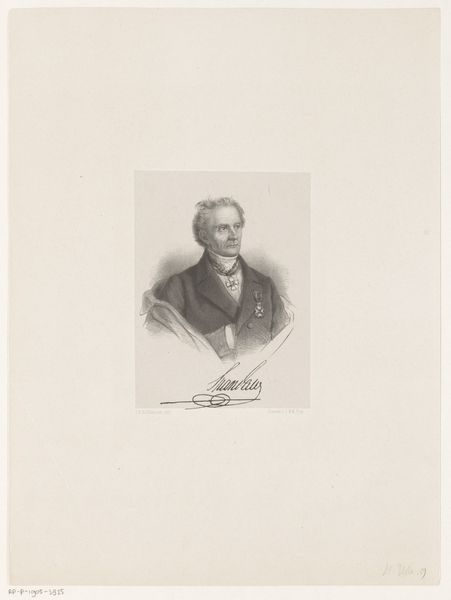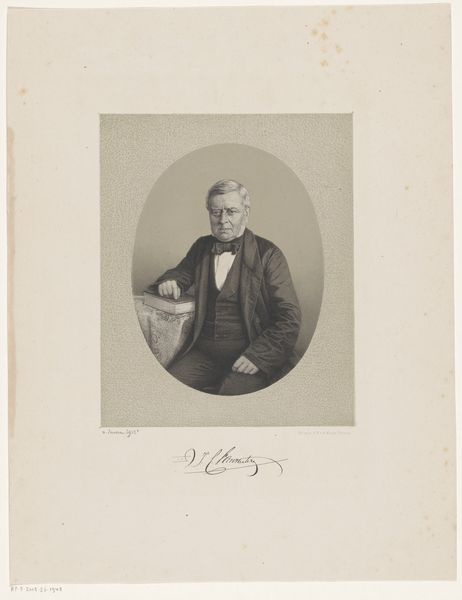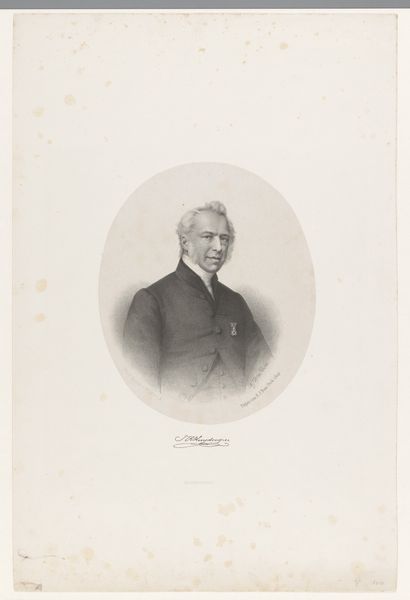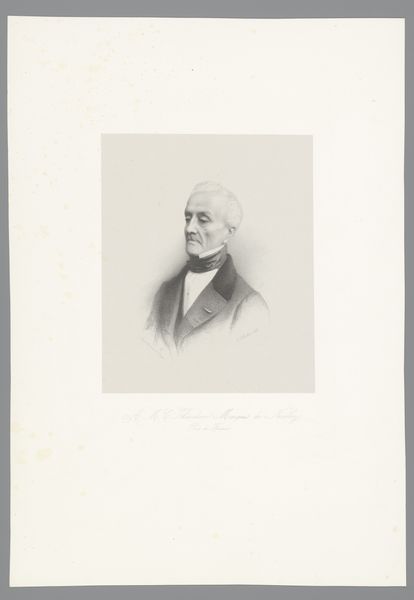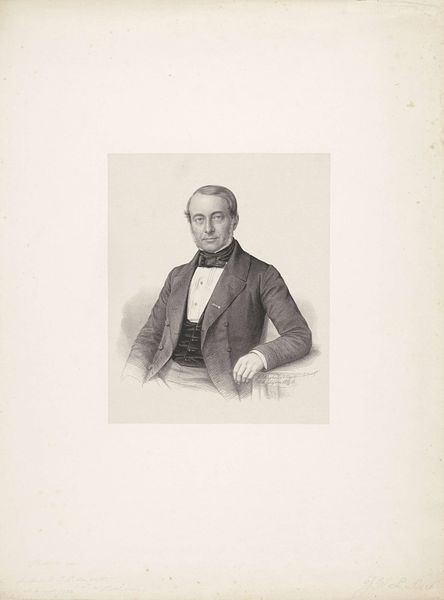
lithograph, print
#
portrait
#
16_19th-century
#
lithograph
# print
#
realism
Dimensions: height 450 mm, width 284 mm
Copyright: Rijks Museum: Open Domain
Curator: This is a portrait of Johann Gottfried Burman Becker. The work is a lithograph print by Isaac Wilhelm Tegner, created sometime between 1850 and 1893, and now a part of the Rijksmuseum collection. Editor: It has a very somber feel to it. The oval frame almost gives it a cameo-like quality, a removed sensibility that I can’t quite put my finger on, although it looks quite realistic, if a little staged, what do we know about Burman Becker and his relationship with Tegner? Curator: The Rijksmuseum provides great information on both; J.G. Burman Becker was a man of letters with broad interests including archaeology and literature. Tegner was, in contrast, primarily known for portraits. In the historical context, the lithograph became a prominent medium for disseminating images of important figures across society. Editor: Which places such a man, the man of letters, within a visual history that makes it more accessible to the people, and this approach has sociopolitical impacts, as prints democratize imagery and can grant access to people previously denied that possibility because of their condition. Is the portrait stylized at all or it would've served purely informative goals? Curator: It leans towards realism, although, as with many portraits, it inevitably reflects the social expectations of representation. Notice the meticulously rendered details of his hair and clothing. It captures a likeness but also aims to convey status. Editor: So, in this case, it's not necessarily about artistic innovation or challenging conventional techniques, but more about contributing to a broader visual culture that served its socio-political time, by visualizing an elite man for future generations. The details feel almost like an engraving - precise and serious. What sort of commentary would contemporary critics have given it? Curator: Early critics might have seen value in its documentary quality. A good likeness was considered a success in portraiture, and lithographs were often evaluated on their ability to disseminate the images of leading men to large numbers of consumers. Editor: And here we are now. Over a century later, discussing it! So this simple, realistically rendered lithograph carries forward a complex story that interweaves art, identity and social status, preserved through the ages! Curator: Precisely! And hopefully it enables audiences today to reconsider this man's contribution in a meaningful and well-rounded manner.
Comments
No comments
Be the first to comment and join the conversation on the ultimate creative platform.
